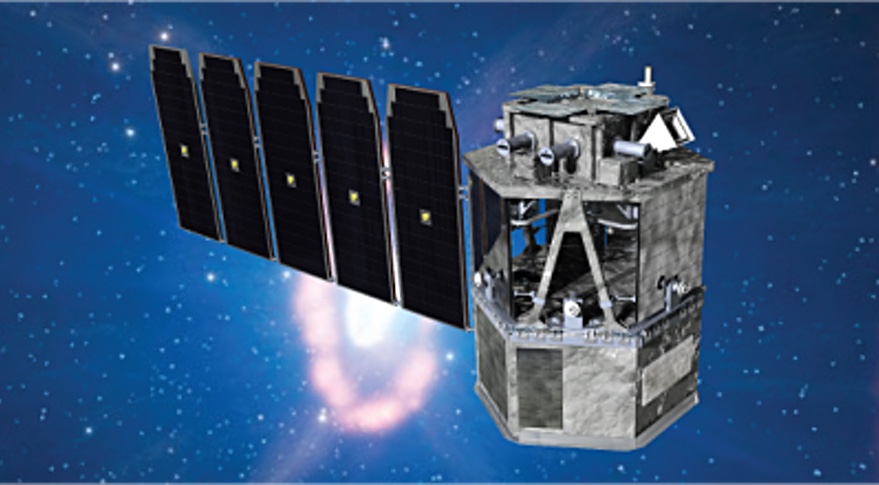WASHINGTON — NASA has selected SpaceX to launch a small gamma-ray astronomy mission on a Falcon 9 in 2027.
NASA announced July 2 that it awarded a contract to SpaceX to launch the Compton Spectrometer and Imager (COSI) spacecraft, a small Explorer-class, or SMEX, mission into low Earth orbit. The contract, valued at about $69 million, covers the August 2027 launch and activities.
A NASA spokesperson told SpaceNews the agency could not release details on the number of companies that bid on the launch, which was done as a task order through the NASA Launch Services 2 contract vehicle. Such information is considered “source selection sensitive,” the agency said.
NASA selected COSI in 2021 as part of the SMEX program with an estimated cost at the time, not including launch, of $145 million. The spacecraft, whose instrument is based on a version flown on high-altitude balloons, will detect soft gamma rays from sources in the galaxy and beyond such as from the annihilation of positrons in the Milky Way.
At the time NASA picked COSI for development, the mission was projected to launch in 2025. NASA, though, slowed down work on COSI, extending its Phase B design work, to reduce near-term costs. That pushed out its launch to 2027.
Slowing down missions ultimately increases their overall cost, Mark Clampin, NASA astrophysics division director, said at a June 28 meeting of the Committee on Astronomy and Astrophysics of the National Academies’ Space Studies Board. NASA has not released an updated cost estimate for COSI, which did pass its confirmation review in April.
COSI is not alone in facing delays because of constrained budgets. In February, NASA picked another Explorer-class astrophysics mission, the Ultraviolet Explorer (UVEX) spacecraft, but pushed back its launch from 2028 to 2030. As with COSI, NASA said it would extend Phase B design work on UVEX “to accommodate budget challenges.” NASA also declined to select a smaller “mission of opportunity” as part of that competition, again because of budget pressures.
Clampin cited those cost issues at the committee while emphasizing that he wanted to maintain a balance between large and small missions. “I got the decadal recommendation that I have to maintain a cadence” of Explorer missions, he said at the committee meeting. “I’m trying to keep them moving forward.” That includes another call for proposals for SMEX missions in 2025.
That meeting included a discussion about studies of potential changes to operations of the Chandra X-Ray Observatory and Hubble Space Telescope to reduce their costs. The report from that Operations Paradigm Change Review will be released at the end of July, Clampin said, after a presentation at a meeting of the Astrophysics Advisory Committee July 23-24.
Despite the budget pressures, NASA was able to save money with COSI’s launch. The agency’s fiscal year 2025 budget projected spending $26 million less on the mission in fiscal years 2025 through 2027 than the projections in its 2024 budget proposal. “This budget reflects savings due to a reduced launch vehicle estimate from the launch services provider, which resulted in an overall decrease to the LCC,” or lifecycle cost, the proposal stated. The proposal, released in March, did not identify SpaceX as the launch provider.
